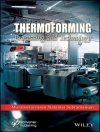For the second edition of ‘Microreactors in Organic Chemistry and Catalysis’ all chapters have been revised and updated to reflect the latest developments in this rapidly developing field. This new edition has 60% more content, and it remains a comprehensive publication covering most aspects of the topic. The use of microreactors in homogeneous, heterogeneous as well as biphasic reactions is covered in the main part of the book, together with catalytic, bioorganic and automation approaches. The initial chapters also provide a solid physical chemistry background on fluidics in microdevices. Finally, a chapter on industrial applications and developments covers recent progress in process chemistry. An excellent reference for beginners and experts alike.
Inhoudsopgave
PROPERTIES AND USE OF MICROREACTORS
Introduction
Physical Characteristics of Microreactors
Fluid Flow and Delivery Regimes
Multifunctional Integration
Uses of Microreactors
FABRICATION OF MICROREACTORS MADE FROM METALS AND CERAMIC
Manufacturing Techniques for Metals
Etching
Machining
Generative Method: Selective Laser Melting
Metal Forming Techniques
Assembling and Bonding of Metal Microstructures
Ceramic Devices
Joining and Sealing
MICROREACTORS MADE OF GLASS AND SILICON
How Microreactors Are Constructed
The Structuring of Glass and Silicon
Isotropic Wet Chemical Etching of Silicon
Other Processes
Thin Films
Bonding Methods
Other Materials
AUTOMATION IN MICROREACTOR SYSTEMS
Introduction
Automation System
Automated Optimization with HPLC Sampling
Automated Multi-Trajectory Optimization
Kinetic Model Discrimination and Parameter Fitting
Conclusions and Outlook
HOMOGENEOUS REACTIONS
Acid-Promoted Reactions
Base-Promoted Reactions
Radical Reactions
Condensation Reactions
Metal-Catalyzed Reactions
High Temperature Reactions
Oxidation Reactions
Reaction with Organometallic Reagents
HOMOGENEOUS REACTIONS II: PHOTOCHEMISTRY AND ELECTROCHEMISTRY AND RADIOPHARMACEUTICAL SYNTHESIS
Photochemistry in Flow Reactors
Electrochemistry in Microreactors
Radiopharmaceutical Synthesis in Microreactors
Conclusion and Outlook
HETEROGENEOUS REACTIONS
Arrangement of Reactors in Flow Synthesis
Immobilization of the Reagent/Catalyst
Flow Reactions with an Immobilized Stoichiometric Reagent
Flow Synthesis with Immobilized Catalysts: Solid Acid Catalysts
Flow Reaction with an Immobilized Catalyst: Transition Metal Catalysts Dispersed on Polymer
Flow Reaction with an Immobilized Catalyst: Metal Catalysts Coordinated by a Polymer-Supported Ligand
Organocatalysis in Flow Reactions
Flow Biotransformation Reactions Catalyzed by Immobilized Enzymes
Multistep Synthesis
Conclusion
LIQUID –
LIQUID BIPHASIC REACTIONS
Introduction
Background
Kinetics of Biphasic Systems
Biphasic Flow in Microchannels
Surface and Liquid –
Liquid Interaction
Liquid –
Liquid Microsystems in Organic Synthesis
Micromixer
Conclusions and Outlook
GAS –
LIQUID REACTIONS
Introduction
Contacting Principles and Microreactors
Gas –
Liquid Reactions
Gas –
Liquid –
Solid Reactions
Homogeneously Catalyzed Gas –
Liquid Reactions
Other Applications
Conclusions and Outlook
BIOORGANIC AND BIOCATALYTIC REACTIONS
General Introduction
Bioorganic Syntheses Performed in Microreactors
Biocatalysis by Enzymatic Microreactors
Multienzyme Catalysis in Microreactors
Conclusions
INDUSTRIAL MICROREACTOR PROCESS DEVELOPMENT UP TO PRODUCTION
Mission Statement from Industry on Impact and Hurdles
Screening Studies in Laboratory
Process Development at Laboratory Scale
Pilot Plants and Production
Challenges and Concerns
Over de auteur
Thomas Wirth is professor of organic chemistry at Cardiff University. After studying chemistry in Bonn and at the Technical University of Berlin, he obtained his Ph D in 1992 with Professor S. Blechert. After a postdoctoral stay with Professor K. Fuji at Kyoto University as JSPS fellow, he started his independent research at the University of Basel (Switzerland). In the group of Professor B. Giese he obtained his habilitation on stereoselective oxidation reactions supported by various scholarships before taking up his current position at Cardiff University in 2000. He was invited as a visiting professor to a number of places including the University of Toronto/Canada (1999), various universities in Japan including Chuo University (2000), Osaka University (2004), Osaka Prefecture University (2008) and Kyoto University (2012, with a JSPS short term fellowship). He was awarded the Werner-Prize from the New Swiss Chemical Society in 2000. His main interests of research concern stereoselective electrophilic reactions, oxidative transformations with hypervalent iodine reagents including mechanistic investigations and organic synthesis performed in microreactors.












